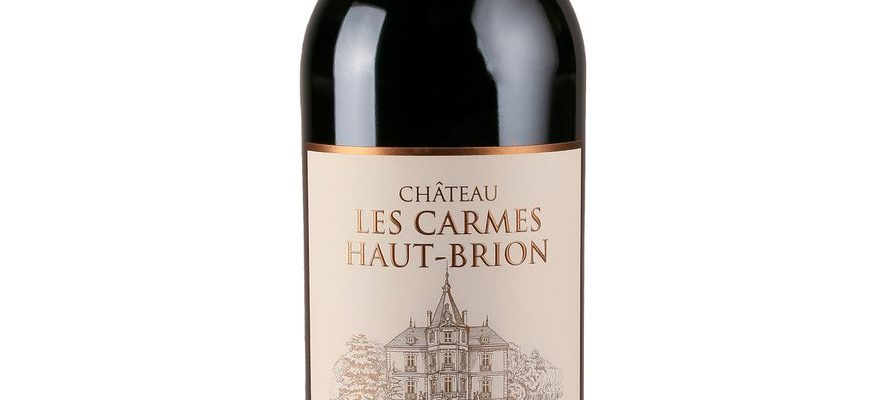There was a lot of excitement in Gironde during the last week of April. The entire wine elite gathered for the preview presentation of the 2022 vintage. Importers, wine merchants, critics, journalists, etc., 5,300 professionals from around the world joined forces to form their opinion on the hundreds of samples offered for tasting. A real marathon. And a rather delicate test as the wines are in the making: aging in barrels will continue for twelve to eighteen months before bottling. It is therefore a question of evaluating its potential. The exercise must be considered as a photo, a snapshot of the quality to come, an assembly as close as possible to that which will be marketed in a year.
Nearly 400 castles are on offer as previews
Of course, not all of the approximately 6,000 Girondin producers participate in this Early Week. But to the barely 2% of them (the classified growths) who were at the genesis of the operation (in 1982) were added a number of estates wishing to highlight their work. Around 400 châteaux are thus offered as primeurs, via trading houses and specialized sites. Why buy skittles whose color you will only see in a year and a half? For the price, undoubtedly. Originally, buying a Bordeaux wine en primeur was the assurance of paying less for it than when it appeared on the shelves of wine merchants and even, sometimes, on those of mass distribution fairs. The ace ! The windfall faded in the 2000s, with many châteaux now displaying a delivery price identical to the en primeur price. A trend that the 2022 vintage could well reverse. At least on some labels.
Still, at the end of April, enthusiasm was there. That of international prescribers, in particular, impatient to verify the rumor announcing for several months an extraordinary vintage; and, of course, that of the winegrowers and owners, themselves amazed by the nectars that remained in their vats. A sweet surprise in reality, as the climatic conditions in 2022 worried producers. “We were more stressed than the vine!” confides Guillaume Thienpont, of the formidable Vieux Château Certan, in Pomerol.
A divine surprise despite extreme weather conditions
The year was mainly marked by a recurring drought, which worsened over time. Over the first ten months, the precipitation deficit amounted to 40%. Historic heat, throughout the summer, then hit the vineyard: twenty days of heatwave (daytime temperature above 35 degrees), and 30.1 degrees on average from June to August… Never seen before. The other major meteorological phenomenon was the hailstorm of June 20: of rare violence, it struck more than 10,000 hectares of vines, particularly in the north of the department.
And yet, from the first cuts of pruning shears, at the end of August (another record!), fears quickly gave way to broad smiles at the impeccable health and beauty of the berries. “Despite forty years of working the vines, I have no comparison for this harvest. Although they are smaller, the quality of our grapes is better than those of 2009 and 2010”, enthuses Hubert de Boüard , from Château Angélus. The only downside to this idyllic picture: falling yields (minus 15% on average), more marked in Médoc than on the right bank, which will have an inevitable impact on prices.
Six months later, the verdict is unanimous, as the first reactions of the most renowned April tasters attest.. “I don’t think I’ve ever seen such a great vintage born,” exclaims Michel Bettane (in In magnum), when the American Antonio Galloni points out (on the Vinous website) the “most memorable young wines [qu’il a] never tasted in Bordeaux”, and that the British William Kelley (Wine Advocate) speaks of “monumental wines”.
Winegrowers are adapting and the vines are showing extraordinary resilience.
There are plenty of dithyrambic terms to describe this very particular and homogeneous vintage: on both sides of the river, we hardly come across any failed wines. The qualitative scale therefore extends from simply good, or even very good, to exceptional, and wines in the latter category abound. Essentially, we will note a remarkable freshness, an incomparably silky mouthfeel, an opulent, bright fruitiness, an ideal balance between acidity and substance, suave tannins, round like little beads of pleasure that roll under the tongue. The finesse, the class and the elegance wonderfully coat the energy, magnifying the depth. The power – very real, with natural degrees exceeding 13.5 – is velvety, without heaviness, and bodes well for good aging potential.
This success is first the fruit of the ingenuity and creativity that crop leaders have demonstrated to deal with these unprecedented climatic conditions: agroforestry, sowing of flowers and plants intended to boost the vitality of the earth… Without forgetting the application of clay on the leaves, like a kind of sunscreen! The vine itself, then, demonstrated extraordinary resilience, particularly the Merlots from Libourne, which the overly insistent rays of the sun, in recent years, had a tendency to roast. Finally, the choices made in the cellar counted a lot, in particular gentle extractions, in order not to harden the wines with massive tannin loads, and aging with less new wood. The hardest part of all this? Wait two years to enjoy a vintage that will be good for all ages.
HEART STROKE
Carmelites
© / DR
Château les Carmes Haut-Brion
Under the leadership of Guillaume Pouthier, this Pessac-Léognan now rivals the greatest in the appellation. €131
